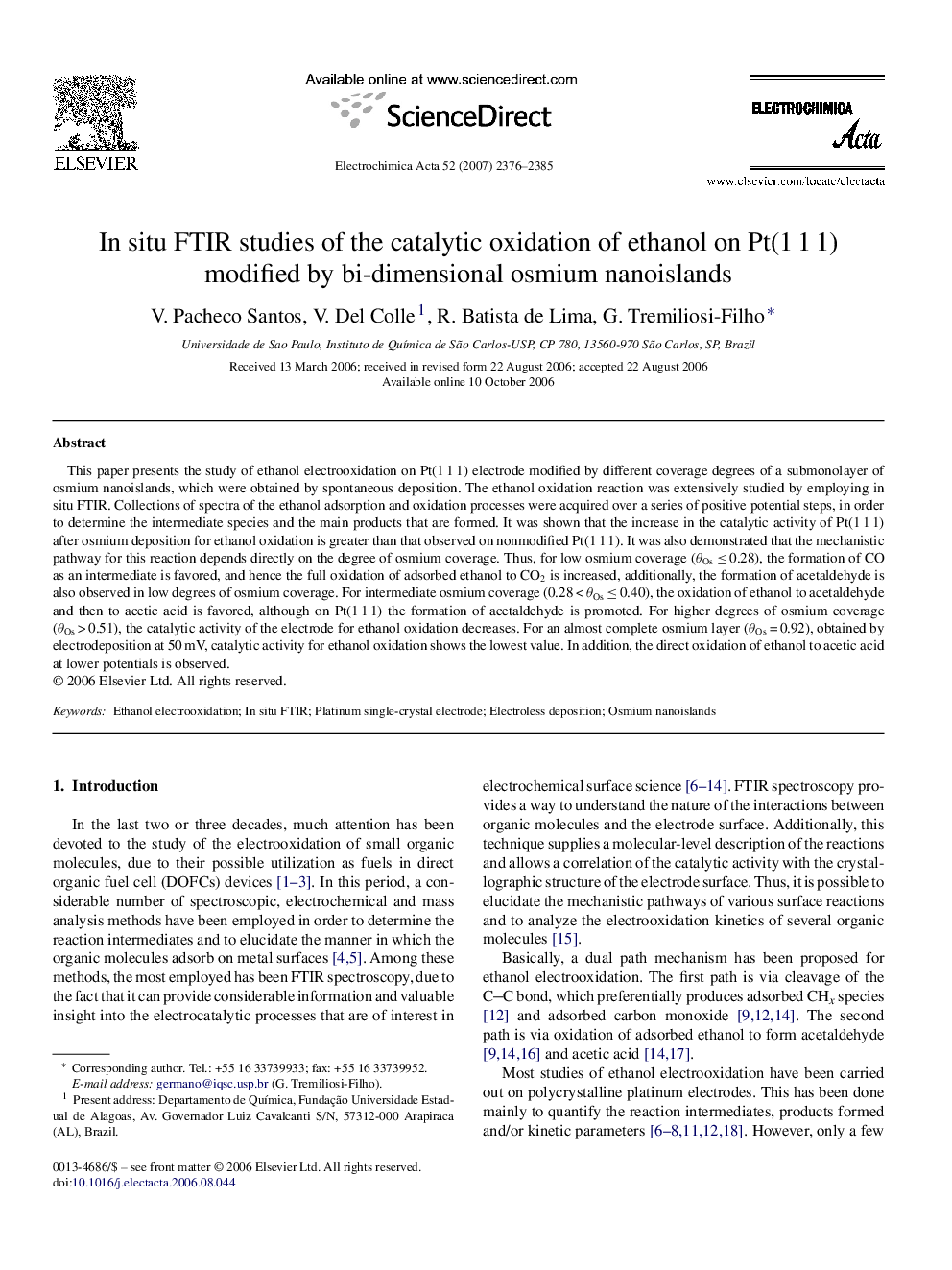| Article ID | Journal | Published Year | Pages | File Type |
|---|---|---|---|---|
| 194884 | Electrochimica Acta | 2007 | 10 Pages |
This paper presents the study of ethanol electrooxidation on Pt(1 1 1) electrode modified by different coverage degrees of a submonolayer of osmium nanoislands, which were obtained by spontaneous deposition. The ethanol oxidation reaction was extensively studied by employing in situ FTIR. Collections of spectra of the ethanol adsorption and oxidation processes were acquired over a series of positive potential steps, in order to determine the intermediate species and the main products that are formed. It was shown that the increase in the catalytic activity of Pt(1 1 1) after osmium deposition for ethanol oxidation is greater than that observed on nonmodified Pt(1 1 1). It was also demonstrated that the mechanistic pathway for this reaction depends directly on the degree of osmium coverage. Thus, for low osmium coverage (θOs ≤ 0.28), the formation of CO as an intermediate is favored, and hence the full oxidation of adsorbed ethanol to CO2 is increased, additionally, the formation of acetaldehyde is also observed in low degrees of osmium coverage. For intermediate osmium coverage (0.28 < θOs ≤ 0.40), the oxidation of ethanol to acetaldehyde and then to acetic acid is favored, although on Pt(1 1 1) the formation of acetaldehyde is promoted. For higher degrees of osmium coverage (θOs > 0.51), the catalytic activity of the electrode for ethanol oxidation decreases. For an almost complete osmium layer (θOs = 0.92), obtained by electrodeposition at 50 mV, catalytic activity for ethanol oxidation shows the lowest value. In addition, the direct oxidation of ethanol to acetic acid at lower potentials is observed.
